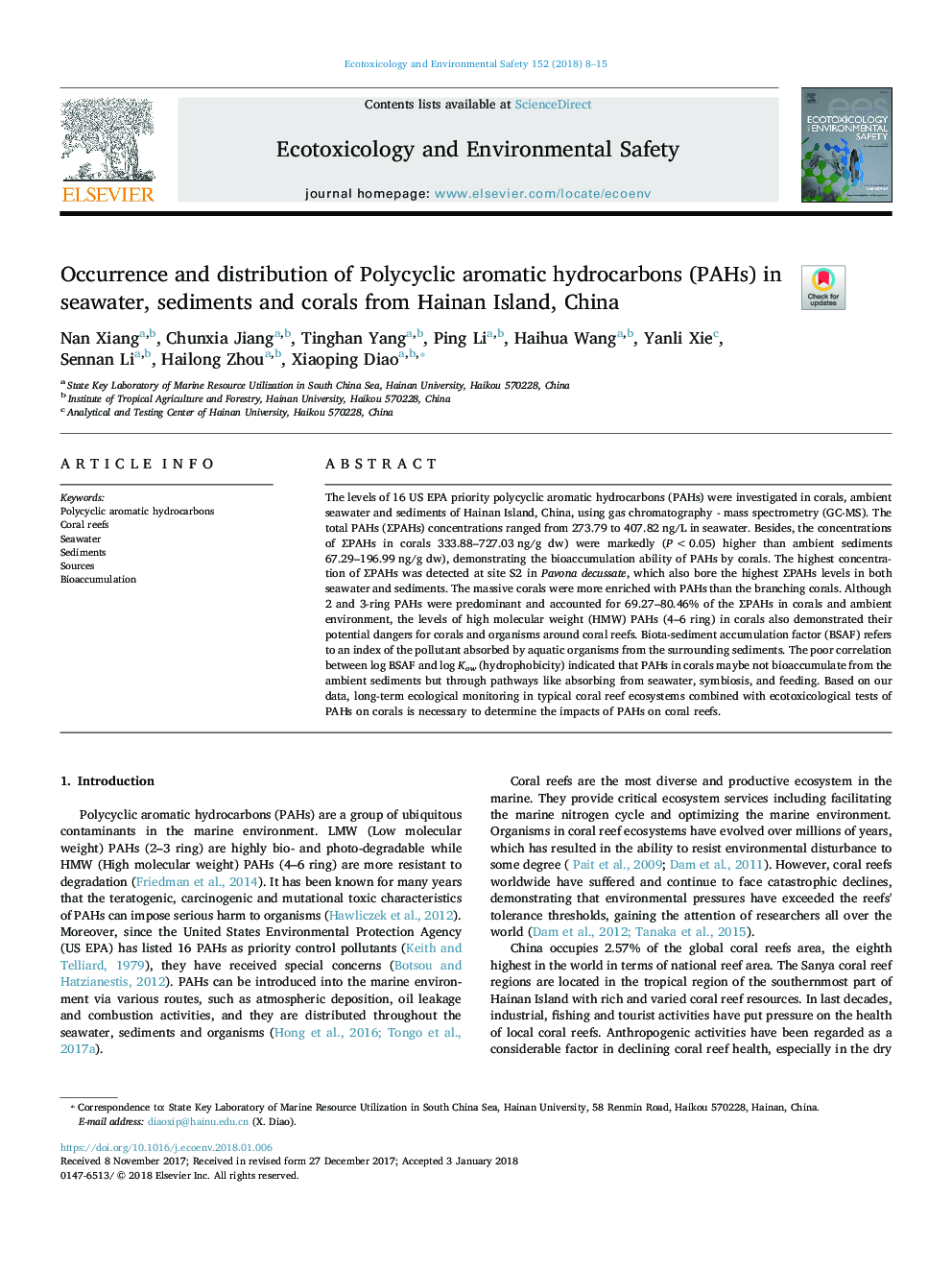| Article ID | Journal | Published Year | Pages | File Type |
|---|---|---|---|---|
| 8854255 | Ecotoxicology and Environmental Safety | 2018 | 8 Pages |
Abstract
The levels of 16 US EPA priority polycyclic aromatic hydrocarbons (PAHs) were investigated in corals, ambient seawater and sediments of Hainan Island, China, using gas chromatography - mass spectrometry (GC-MS). The total PAHs (âPAHs) concentrations ranged from 273.79 to 407.82Â ng/L in seawater. Besides, the concentrations of âPAHs in corals 333.88-727.03Â ng/g dw) were markedly (P < 0.05) higher than ambient sediments 67.29-196.99Â ng/g dw), demonstrating the bioaccumulation ability of PAHs by corals. The highest concentration of âPAHs was detected at site S2 in Pavona decussate, which also bore the highest âPAHs levels in both seawater and sediments. The massive corals were more enriched with PAHs than the branching corals. Although 2 and 3-ring PAHs were predominant and accounted for 69.27-80.46% of the âPAHs in corals and ambient environment, the levels of high molecular weight (HMW) PAHs (4-6 ring) in corals also demonstrated their potential dangers for corals and organisms around coral reefs. Biota-sediment accumulation factor (BSAF) refers to an index of the pollutant absorbed by aquatic organisms from the surrounding sediments. The poor correlation between log BSAF and log Kow (hydrophobicity) indicated that PAHs in corals maybe not bioaccumulate from the ambient sediments but through pathways like absorbing from seawater, symbiosis, and feeding. Based on our data, long-term ecological monitoring in typical coral reef ecosystems combined with ecotoxicological tests of PAHs on corals is necessary to determine the impacts of PAHs on coral reefs.
Related Topics
Life Sciences
Environmental Science
Environmental Chemistry
Authors
Nan Xiang, Chunxia Jiang, Tinghan Yang, Ping Li, Haihua Wang, Yanli Xie, Sennan Li, Hailong Zhou, Xiaoping Diao,
